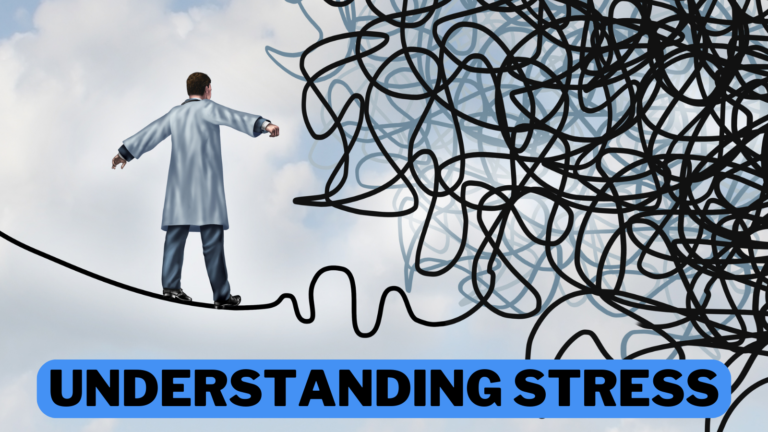Symptoms Of Stress In A Dog
Common Symptoms Of Stress In A Dog You Shouldn’t Ignore
Like humans, dogs can experience stress, which manifests in behavioural and physical changes. Recognizing the symptoms of stress in a dog early ensures its well-being and prevents more serious health issues.
Environmental changes, anxiety, or health problems can trigger stress in dogs, causing everything from excessive barking to loss of appetite.
This article will explore the common symptoms of stress in dogs that every pet owner should be aware of—and how to address them for a happier, healthier pup.
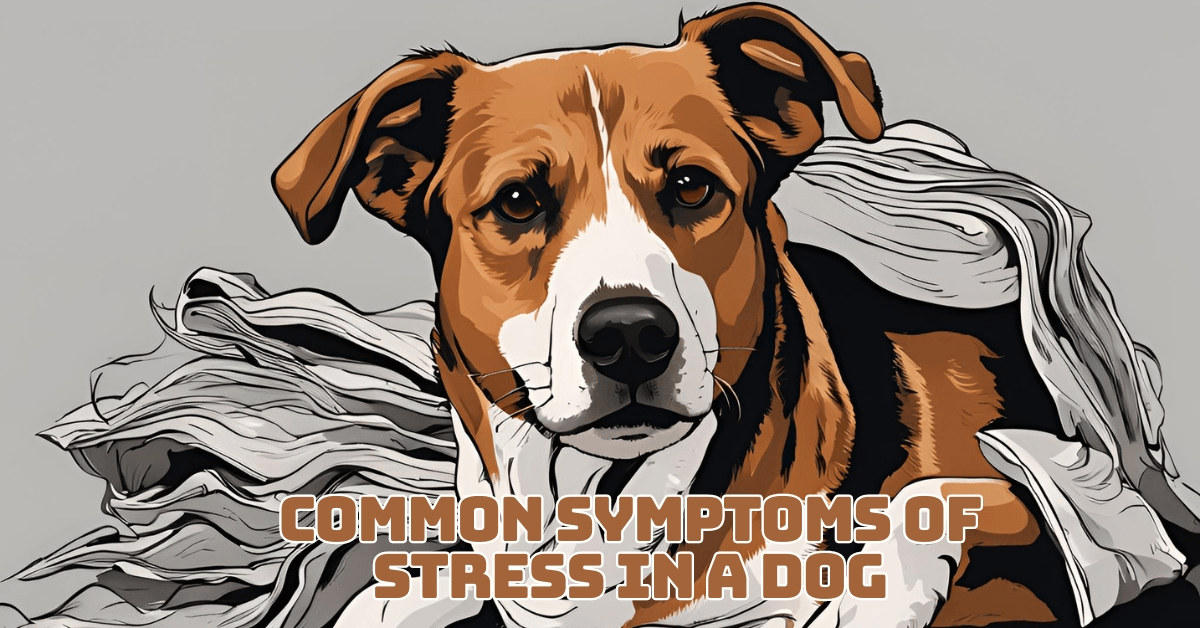
Types Of Stress In Dogs
Dogs can experience various types of stress, each with its causes and effects. Understanding these different types helps pet owners identify the root of their dog’s anxiety and provide appropriate support.
Here are the common types of stress in dogs, broken down for clarity:
1. Acute Stress
Acute stress is short-lived and occurs when a dog faces sudden changes or unfamiliar experiences, such as meeting new people, loud noises, or visiting the vet.
Usually, it goes away as the stressor is removed, but if it is not treated, repeated exposure might have long-term consequences.
2. Chronic Stress
Chronic stress develops over time due to prolonged exposure to stressful environments, like noisy areas or overcrowded shelters.
Dogs experiencing chronic stress may show signs of anxiety, depression, or behavioural issues, which can negatively affect their health and well-being.
3. Environmental Stress
Environmental stress occurs when a dog’s surroundings change, such as moving to a new home, introducing new pets, or changing routine. These adjustments can unsettle a dog, leading to increased nervousness, withdrawal, or destructive behaviours.
4. Social Stress
Social stress arises from interactions with other animals or humans. Dogs that experience aggression from other pets or isolation from human contact can develop anxiety. This stress can result in defensive behaviours, withdrawal, or attempts to avoid certain social situations.
5. Separation Anxiety
When a dog has prolonged periods of loneliness, they can develop separation anxiety. Signs include destructive chewing, excessive barking, or pacing.
Dogs with separation anxiety struggle with being away from their owners, often exhibiting distress when the owner is preparing to leave.
6. Health-Related Stress
Health-related stress stems from illness, injury, or physical discomfort. Pain or sickness can cause a dog to become anxious, withdrawn, or irritable.
Early diagnosis and treatment of the underlying health problem might help avoid subsequent consequences and lower stress levels.
Common Symptoms Of Stress In A Dog
Here are some common symptoms of stress in dogs that pet owners should watch out for:

1. Excessive Barking Or Whining
Dogs often communicate their stress through increased vocalization. It could be a sign of stress if your canine companion is excessively barking or whining, especially in situations that wouldn’t elicit such behaviour.
Triggers might include new environments, unfamiliar people or animals, or being left alone. Persistent vocalization, particularly when combined with other symptoms, indicates that your dog may be experiencing emotional or environmental stress that needs to be addressed.
2. Panting Or Drooling
While dogs naturally pant to cool down, excessive panting or drooling can indicate stress when it’s not hot. When under pressure, a dog’s body releases hormones that increase heart rate and respiration, causing it to pant heavily.
Drooling may accompany this if the dog is highly anxious. Stress-related panting often occurs during vet visits, with loud noises, or after a frightening experience, signalling that the dog feels unsafe or uncomfortable.
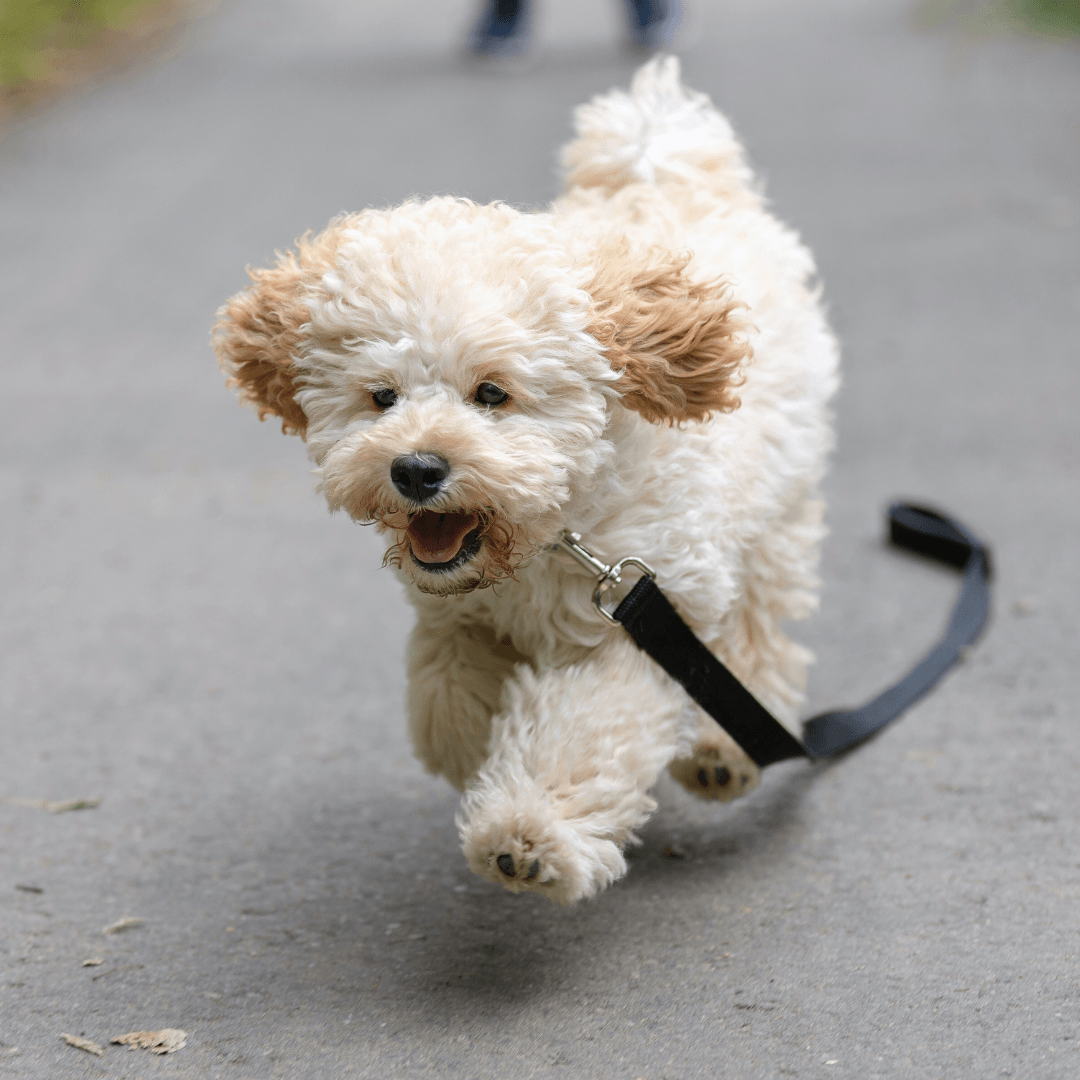
3. Pacing Or Restlessness
A stressed dog may pace around the house or seem unable to settle in one spot. Pacing or restlessness is one of the symptoms of stress in a dog, indicating anxiety or nervousness often triggered by changes in their environment or separation from their owner.
If the pacing becomes repetitive or compulsive, it may indicate more severe stress. If you want your dog to feel more confident and at ease, you must address the underlying cause.
4. Changes In Appetite
Stress can significantly impact a dog’s eating habits. Some dogs may lose interest in food, skipping meals or refusing treats, while others may overeat as a coping mechanism. Changes in appetite often coincide with stressful situations like moving, boarding, or the arrival of a new pet.
If your dog’s eating behaviour shifts suddenly and persists, it’s important to evaluate their emotional and physical health to identify and manage the stress.
5. Aggression Or Fearfulness
Stressed dogs can display heightened aggression or fear, reacting negatively toward people, other animals, or unfamiliar objects.
This may include growling, barking, or even biting. Fearful dogs might retreat, avoid eye contact, or cower when approached.
These behaviours are often a dog’s way of expressing discomfort or fear in response to stressors like loud noises, new environments, or perceived threats. Monitoring and managing stress can help prevent the escalation of these behaviours.

6. Destructive Behaviour
A dog exhibiting destructive behaviour, such as chewing on furniture, shoes, or household objects, may be experiencing stress. Destruction often occurs when the dog feels anxious or bored, particularly if left alone for extended periods.
Separation anxiety is a common cause, as the dog may act out to relieve stress. If your dog begins destroying things out of character, assessing its emotional well-being and addressing potential stressors is important.

7. Excessive Licking or Grooming
Stress can lead dogs to engage in excessive self-grooming, particularly licking themselves. This behaviour, while seemingly harmless at first, can escalate to the point where the dog develops sores or hotspots from over-licking.
The repetitive nature of grooming helps dogs self-soothe. However, if it becomes compulsive, it's a clear indication of underlying stress or anxiety that has to be dealt with before anything physical happens.
8. Avoidance Or Withdrawal
A stressed-out dog may attempt to avoid particular persons or circumstances as a coping strategy. They might hide in a quiet space, avoid eye contact, or shy away from interactions.
Dogs who are under constant stress or worry, such as those whose environment is changing or who are meeting new people or pets, frequently exhibit withdrawal symptoms. Noticing this behaviour is crucial for identifying stress and providing support.
9. Changes In Sleep Patterns
Stress can significantly affect a dog’s sleep routine, causing them to sleep more than usual or experience insomnia. Increased sleep may indicate your dog is overwhelmed or depressed, while difficulty sleeping might result from anxiety, restlessness, or discomfort.
Stress-induced sleep disturbances are common when dogs are exposed to new environments, loud noises, or separation anxiety. Monitoring these changes can help identify the root of the stress and ensure your dog gets the rest they need.
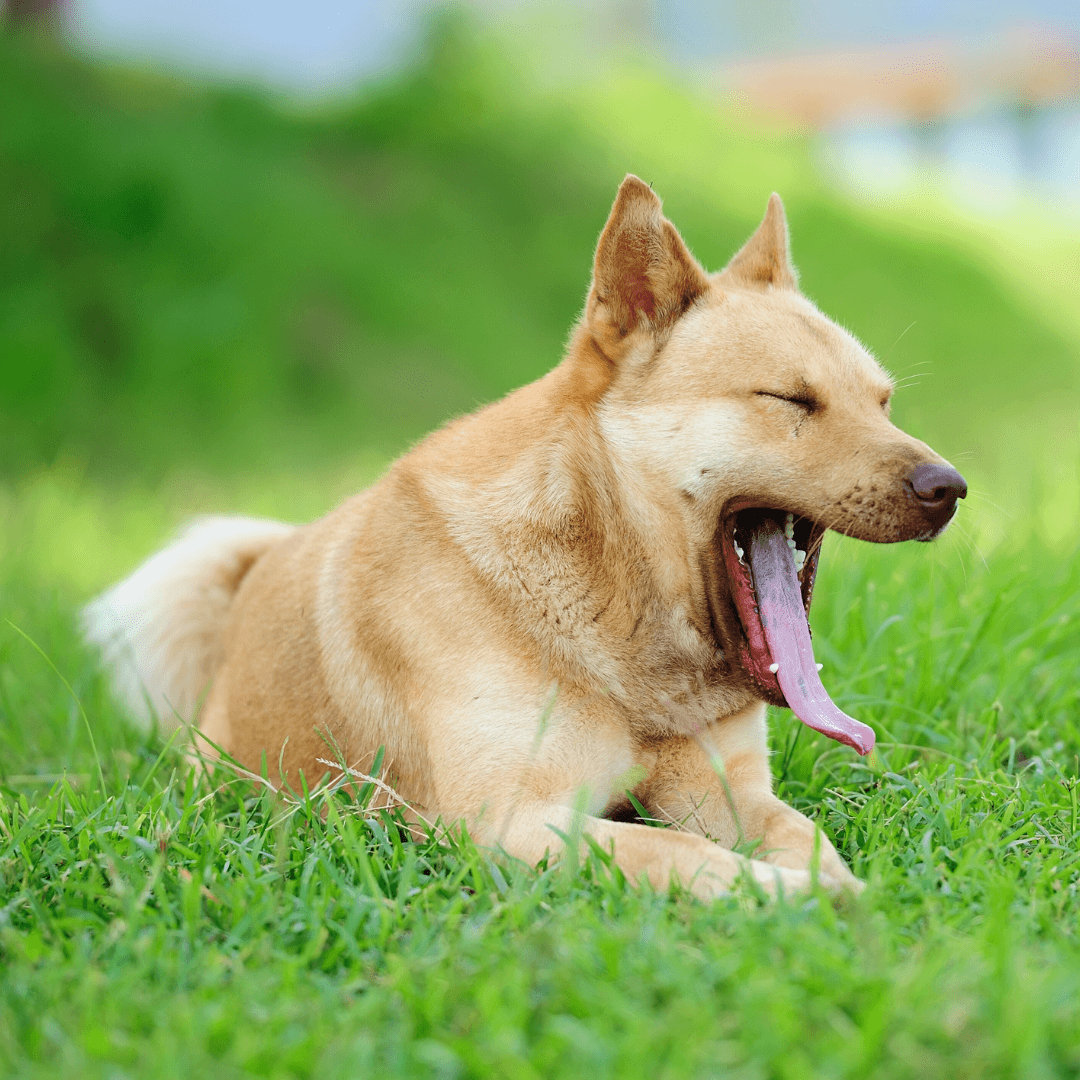
10. Yawning Or Lip Licking
Dogs often yawn or lick their lips as a calming signal when stressed. Unlike tired yawns, stress-related yawning occurs frequently in anxiety-inducing situations.
Lip licking may accompany this behaviour, even when the dog hasn’t eaten or isn’t hungry. These subtle signs suggest discomfort and can occur during interactions with unfamiliar people, new environments, or when facing stressful stimuli like loud noises.
11. Tail Tucking
Tail tucking is a classic sign of stress, fear, or submission in dogs. When feeling threatened or nervous, a stressed dog taps its tail between its legs to signal discomfort.
This is especially common in unfamiliar or high-stress situations, such as meeting new people, encountering aggressive animals, or facing loud, sudden noises. Recognizing tail tucking is essential to understanding your dog’s emotional state and addressing the cause.
12. Dilated Pupils Or Wide Eyes
Dilated pupils or wide eyes are significant symptoms of stress in a dog, often indicating heightened anxiety or discomfort. You might also notice a “whale eye” effect, where the whites of the dog’s eyes are more visible.
This wide-eyed, intense gaze indicates anxiety or fear. It typically occurs in stressful situations like vet visits, fireworks, or when the dog is exposed to something they perceive as a threat.
13. Shedding More Than Usual
Dogs often shed more fur when stressed, particularly during or after anxiety-inducing events such as vet visits, grooming, or meeting new people. Stress hormones can trigger excessive shedding, even in dogs that don’t normally shed much.
If your dog starts feeling stressed in new or unfamiliar environments, it may be necessary to manage its stress response.

14. Excessive Scratching
A stressed dog may frequently scratch itself without skin conditions or parasites like fleas. This behaviour shows emotional discomfort, as dogs may resort to scratching to cope with stress.
If your dog is scratching excessively and other symptoms of stress are present, it’s important to assess what might be causing the anxiety to prevent skin damage from over-scratching.
15. Sudden Loss Of House Training
A house-trained dog that suddenly starts having accidents indoors might be experiencing stress. This regression in behaviour can be triggered by changes in the routine, environment, or the introduction of new pets or people.
Stress may cause your dog to feel anxious, leading to accidents even though it is otherwise well-trained. Addressing the source of the stress is key to helping it regain its normal habits.
16. Frequent Shaking Off
Dogs often shake off their fur, like they do after a bath, to relieve stress. This behaviour can occur after a tense interaction or in stressful situations like vet visits or loud events.
The shake is a way for the dog to release pent-up stress and reset emotionally. It’s a subtle but important sign that your dog is trying to calm itself.
17. Increased Heart Rate
Stress can lead to a noticeable increase in a dog’s heart rate. This physical response often occurs in anxiety-inducing situations such as during thunderstorms, fireworks, or vet visits.
You may notice your dog’s heart beating faster than normal due to the body’s natural fight-or-flight response. Monitoring your dog’s heart rate during stressful situations can help gauge their anxiety levels.

18. Stiff Or Tense Body Posture
A stressed dog may hold its body rigidly, with muscles tensed, indicating discomfort or fear. This stiff posture is often accompanied by other signs of stress, such as wide eyes, tail tucking, or trembling.
Dogs in this state may also be less responsive to commands or attempts at interaction as their focus shifts toward the source of stress. Recognizing this behaviour can help you intervene before stress escalates.
How To Calm A Stressed Dog
A worried dog can display many behaviours, such as eating. Anxiety is essential to well-being. By being aware of the sources of stress and using practical calming techniques, you can make your pet's environment more tranquil.
Here are detailed methods to help calm a stressed dog:
1. Create A Safe Space
If your dog feels nervous, provide it with a designated hiding space. This safe space should be quiet and free of noise and distractions.
Consider providing a comfortable bed, familiar blankets, and favorite toys to make the area inviting. A dedicated space lets your dog feel secure and relaxed during stressful situations.
2. Provide A Routine
Establishing a consistent daily routine can significantly reduce anxiety in dogs. Try to maintain regular schedules for feeding, walks, and playtime.
A consistent schedule offers stability that can reduce stress in your dog by letting him know what to expect. Consistency can be particularly helpful during changes, such as moving to a new home or introducing new pets.

3. Use Calming Products
Explore various calming products designed to help alleviate dog anxiety. Anxiety wraps, such as the Thundershirt, can provide gentle, constant pressure that comforts some dogs.
Pheromone diffusers or sprays release calming scents that can soothe anxious pets. Additionally, natural calming supplements that contain ingredients like chamomile or valerian root are available, which can help promote relaxation.
4. Engage In Regular Exercise
Regular physical activity is vital for a dog’s mental and emotional health. Walk, play, or play interactive activities with your dog daily to help them burn off extra energy.
Exercise releases feel-good and anxiety-reducing endorphins. To maximize the benefits, modify the duration and intensity of the training based on your dog's age, breed, and energy level.
5. Practice Relaxation Technique
Teaching your dog relaxation techniques can help them cope with stress. Try gentle massage to soothe your dog and create a calming effect. You can also practice deep breathing while petting your dog, which can help you relax.
Consider using calming commands like “settle” or “relax” and rewarding your dog with treats when they respond positively.
6. Use Positive Reinforcement
Reinforce calm behaviour with treats, praise, or affection. This approach encourages your dog to associate relaxation with positive experiences, making them more likely to exhibit calm behaviour.
For instance, when your dog settles down during a stressful situation, reward them with a treat or gentle praise to reinforce that behaviour.
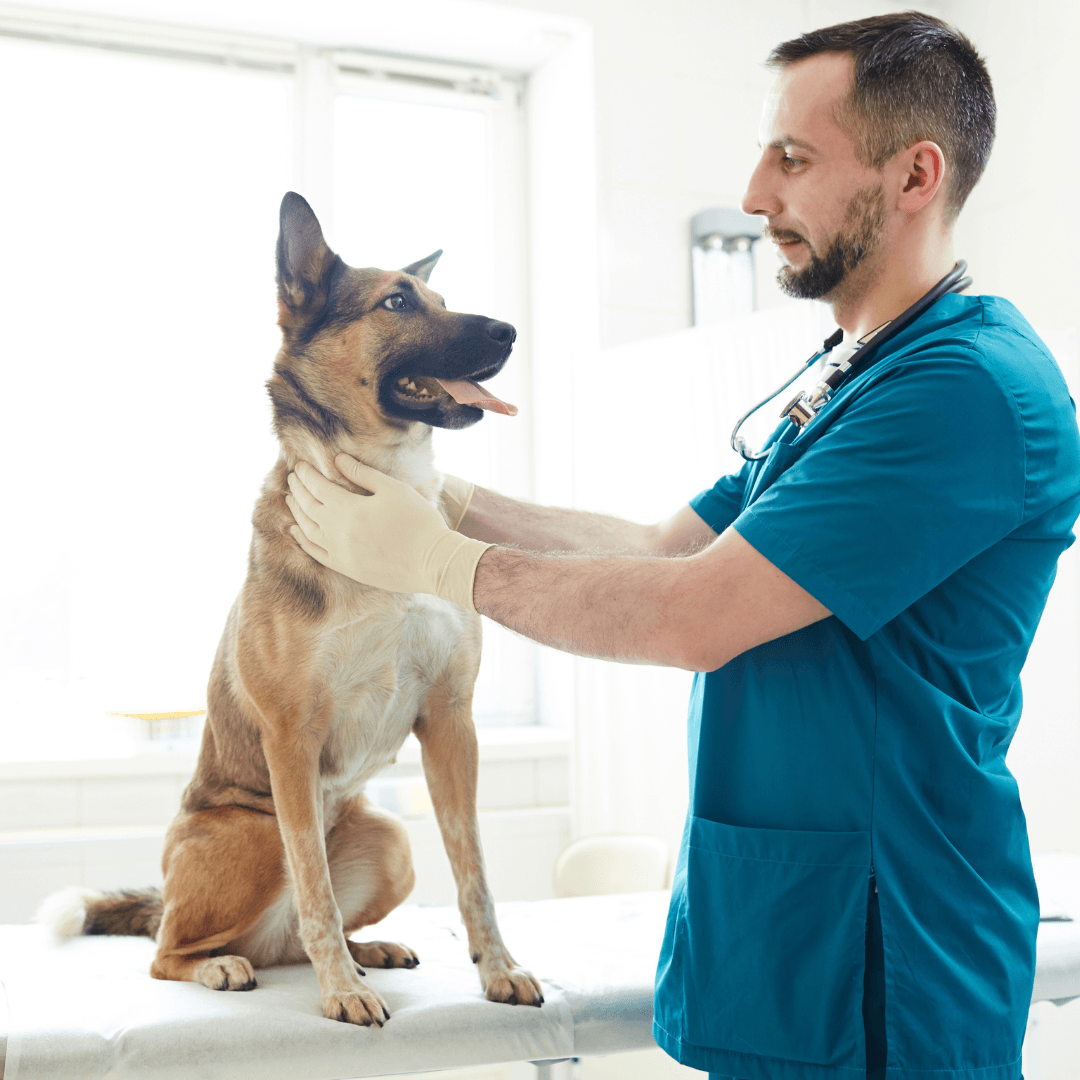
7. Consider Professional Help
If your dog’s anxiety persists despite your efforts, seek professional guidance. A veterinarian or certified dog trainer can provide tailored advice and training techniques to address your dog’s needs. In certain instances, they could suggest anxiety pills to assist your dog in properly controlling their stress levels.
8. Stay Calm And Patient
Your behaviour can significantly influence your dog’s stress levels. Remain calm and patient during anxious moments, using soothing tones and gentle body language.
If you display anxiety, your dog may pick up on those emotions and become more stressed. Practicing calmness will help reassure your dog that they are safe and secure.
FAQ
1. Is It Normal For Dogs To Be Stressed?
Answer: Yes, it’s normal for dogs to experience stress. However, if the stress becomes chronic or severe, it’s important to seek help from a veterinarian or dog trainer.
2. Can Stress In Dogs Lead To Health Problems?
Answer: Yes, long-term stress can result in a range of health concerns, including gastrointestinal disorders, immunological deficiencies, and behavioural disorders. For general health, managing stress is essential.
3. What Should I Do If My Dog Shows Signs Of Severe Stress?
Answer: If your dog shows severe signs of stress, such as aggression or persistent anxiety, consult a veterinarian or a professional dog trainer for guidance and support.
4. Are There Calming Medications For Dogs?
Answer: Yes, calming medications and supplements are available for dogs. Always check with your veterinarian before beginning any new regimen to ensure a drug is right for your dog.
5. How Long Does It Take For A Dog To Calm Down After Being Stressed?
Answer: The time it takes for a dog to calm down can vary based on the individual dog and the stressor. It may take minutes to hours; providing a calm environment can help speed up the process.
6. How To Treat Heat Stress In Dogs?
Answer: To treat heat stress in dogs, move them to a cooler location and provide fresh, cool water. Apply cool, damp cloths to their body, especially on the neck and armpits, and use a fan to circulate air.
Monitor their temperature and behaviour closely. If symptoms persist or worsen, seek veterinary assistance immediately, as heat stress can lead to serious health issues.
Conclusion
Recognizing the symptoms of stress in dogs is vital for their well-being. Attention to a dog's stress symptoms is essential for their well-being and can help you identify when your dog feels anxious or uncomfortable.
Early intervention can prevent further issues and help restore your dog's sense of security. Remember that your dog relies on you for support and comfort, so proactively addressing their stress is essential for a happy, healthy life.
I trust you enjoyed this article on Common Symptoms Of Stress In A Dog You Shouldn’t Ignore. Stay tuned for more blog posts soon. Take care!
JeannetteZ
>>>Please click here to read my article on A Full Overview Of Dogs And Their Activity<<<
>>>Brain Training For Dogs Review<<<
My #1 Dog Training Recommendation
Your Opinion Is Important To Me
Do you have thoughts, ideas, or questions? I would love to hear from you. Please leave me your questions, experiences, and remarks about this article, Common Symptoms Of Stress In A Dog You Shouldn’t Ignore, in the comments section below. You can also email me at Jeannette@Close-To-Nature.org.
Disclosure
This post may contain affiliate links. As an Amazon Associate and other affiliate programs, I earn from qualifying purchases at no extra cost to you. Please read my full affiliate disclosure.
You might also enjoy these blog posts:
Interesting Facts About White-Tailed Deer
Largest Owls In The World: Majestic Giants Of The Wild
Interesting Facts About Owls That Will Fascinate You
Best Container Flowers For A Thriving Garden
Best Container-Grown Vegetables






